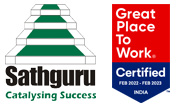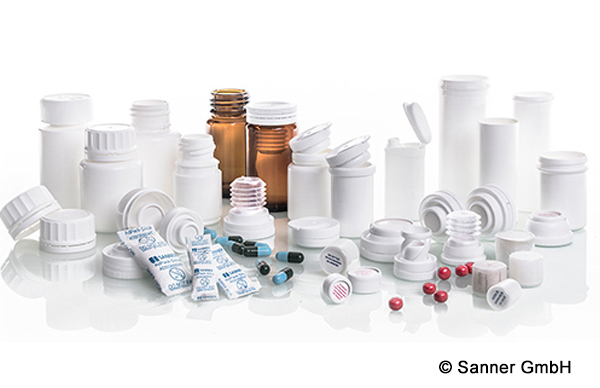Packaging plays a crucial role in the pharma industry, where its function extends beyond serving as a branding aid and providing barrier protection to products for the shelf life period. It is increasingly playing a vital role in ensuring overall patient safety by carrying key information pertaining to the product, ensuring tamper-evidence and traceability of products. The global pharma packaging industry is thriving with modernization due to several drivers.
Regulatory Changes Driving Packaging Innovation Globally
Serialization is a global buzz word that is transforming packaging industry as whole, more so in pharma where counterfeit products have perilous consequences. There is growing regulatory thrust in this direction with complete unit level track and trace becoming an everyday reality. The US’ Drug Quality and Security Act (DQSA) and the EU Falsified Medicines Directive (FMD) are newer developments that stipulate issue of unique serialization codes to the smallest saleable units of pharma products. Although being implemented in a phased manner, there is high frenzy around compliance preparedness in the industry given the strategic importance of these target markets for the global pharma industry.Multinationals such as Pharma Packaging Solutions (PPS) are already offering comprehensive track and trace solutions for packaging today.
Evolving Product Composition – Rethinking Primary Packaging
Expanding share of large molecule drugs within the pharma pie has raised questions on extractables and leachables in the context of packaging. With most biologic drugs being injectables, glass is the logical choice for primary packaging. However, some biologic drugs are found to interact with glass, delaminate it, causing flaking. Silicon oil, a commonly used lubricant in plunger of pre-filled syringes as well as in rubber stoppers in glass vials, is susceptible to drug interactions and capable of denaturing/ aggregating protein drugs and in some cases, even making the drug immunogenic. Research is being pursued on low-silicon or silicon-free alternate packaging to circumvent this challenge. Industry is also considering cyclic olefin copolymers based packaging as replacements for glass in biologic drugs. Excellent moisture barrier properties combined with their intrinsically inert and non-reactive nature makes them excellent choices for biologic drugs. Outstanding material clarity also makes it visually comparable, yet a sturdier alternative to glass. In essence, with continual innovation in drugs and delivery technologies, there is simultaneous need for synergistic evolution from the packaging industry. With cell therapy and gene therapy gainingmomentumglobally, there are more packaging questions looming in the horizon that need addressing.
Patient-centric Packaging Innovation
Changing patient lifestyles and growing middle class affordability across the world is changing drug delivery landscape and bringing new unmet needs that provide pharma packaging companies impetus to innovate:
- Patient Adherence/ Compliance: With ageing population and increasing life expectancy, share of geriatric patients within the pharma target population is growing and provides room for targeted innovation. While digital medicine with in-built sensors is making inroads in compliance monitoring and connected care, Abilify MyCite from Otsuka and Proteus Digital Health, for schizophrenia, being the first digital pill approved by FDA last year, packaging innovations also contribute their share in enhancing patient adherence. While features such as daily dose markings on the pack are fairly common, advanced features such as digital timers and alarms on pill bottles reminding patients of the time for next dose are already on the market in the western world.
- Accurate Dosing and Dose Monitoring: Dose monitoring features in packaging are increasingly playing a role in abuse deterrence as well as patient adherence. Novel technologies range from simple metered dosing systems to calendar-enabled closure technologies that tracks, counts pills as they get dispensed and send the data to a smart phone. Unit-dose packaging with key drug details incorporated in every dose are increasingly finding preferred applications in hospitals and clinics as a convenient and safe option, driving allied trends in packaging.
- Tamper protection and Child Lock: With high contribution of pharmaceuticals in non-fatal childhood poisoning, need for child locking mechanisms in pharmaceuticals is critical. Although such solutions are commonplace, packaging companies continue to incrementally innovate in striking the right balance between making it inaccessible to children but not too difficult for geriatric patients. Several innovative packaging mechanisms are evolving in blister packs for tablets as well as bottles and inhalers.
- Sustainability and Carbon Footprint: Although not a principal concern in pharma industry, growing importance in other packaging industries such as FMCG has trickled into due to convergence in packaging suppliers. Factors such as lean manufacturing and energy-conserving packaging lines are being given increasing importance in the pharma sector. There are also product innovations in primary packaging such as Formpack® Ultra from Australian packaging firm Amcor. A technology innovation in blister packs segment for oral solids, it allows cavities to be drawn deeper, thereby minimizing overall size of the blister pack andvolume of secondary and tertiary packaging,eventually translating a cascading effect on waste minimization across the value chain. There is also growing focus on minimizing PVC content in pharma packaging due to unfavorable environmental footprint.
Indian Pharma Packaging Industry – Current landscape & Potential Impact of global trends
Today, India is undoubtedly the pharmacy of the world, exerting indomitable strength in manufacturing of generic drugs for US and other global markets. Increasing regulatory scrutiny in global markets thus has a direct bearing on sustaining competitiveness of Indian industry. While Indian pharma companies are escalating themselves in the value chain, transitioning into higher value areas such as specialty pharma and NCEs, the allied industries of pharma packaging have been slower to evolve.
Indian pharma packaging industry is structured in the form of a pyramid with an extended base. At the top, there are multinationals such as West Pharma, Huhtamaki, Amcor, and SGD Pharma with marketing offices or manufacturing units in India as well as large Indian companies such as UFlex and EsselPropack. At the base, the industry is deeply fragmented with multiple smaller companies dotting the landscape, with most being generalized suppliers catering to multiple sectors such as food, pharma, and personal care, with generic product offerings. These smaller companies tend to focus exclusively on specific parts of the value chain, whether it is in segments of primary packaging like blister packaging, HDPE bottles, ampoules etc. or in segments of secondary packaging including labels, pouches and cartons. The industry is therefore largely commoditized with no significant differentiation being offered by smaller companies.
As Indian pharma companies continue to expand further into regulated markets, it is imperative that the allied industries of packaging move beyond the value proposition of cost advantage, especially the rapidly evolving regulatory landscape. Indian packaging companies need to rise to the challenge and get future-ready to support the pharma players in their quest for growth. However, while there is high level of cognizance in the industry of the evolving regulatory and innovation landscape, it has not resulted in significant change in Indian industry’s engagement in technology development or adoption. Some established players such as Bilcare are embracing global technology advancements, but considering the fragmented nature of the market, the momentum needs to be accelerated.
Future growth for packaging companies will be driven by the food and pharma sectors, and given regulatory implications in both these industries, companies which can offer clients reliability and a familiarity with regulatory requirements will be able to stand out in this crowded space. Therefore packaging companies should consider development of specialized focus in these sectors. Between the two segments, pharma offers wider possibility of margin accretion compared to food where higher realization could be limited to segments such as organic or ready-to-eat foods.
Budding M&A Landscape and Need to Catapult Innovation Appetite
Given the low levels of technology innovation and relatively small size of companies in the fragmented industry, Private Equity transactions have been few and far between. However, there has been increased M&A activity in the recent past,especially in 2017, with interest from global companies. Some of the notable transactions are given below.
M&A Transactions
| Year | Target | Acquirer | Deal Value ($M) | Deal Type |
| 2017 | Sunrise Containers | Thai Plaspac | – | Inbound |
| 2017 | 3D Technopack | Hoffmann Neopac AG | – | Inbound |
| 2017 | Super Label Manufacturing LLP | Pacman M.E LLC | 3.75 | Inbound |
| 2017 | Four M Propack | Shriji Polymers India. | 2.82 | Domestic |
| 2016 | Essel Deutschland | EsselPropack Ltd. | 24 | Outbound |
| 2015 | Packaging India | Amcor Flexibles India | 26 | Domestic |
| 2014 | Positive Packaging | Huhtamaki PPL Ltd. | 137 | Inbound |
| 2014/2012 | SkanemInterlabels | Skanem AS | 39 | Inbound |
Private Equity Transactions
| Year | Target | Investor | Deal Value ($M) |
| 2016 | AVI Global Plast | Multiple investors | 0.07 |
| 2015 | Shriji Polymers | Tata Capital | – |
| 2015 | Manjushree Technopack | Kedaara | 23 |
| 2014 | Radha Madhav Corporation | Multiple investors | 2.4 |
Consolidation in the Indian industry is imminent in this evolving landscape. With no upstream innovation backbone, Indian companies will choose between status quo implying stagnant presence in an industry rapidly adapting to change or will need to seek growth capital, adapt technologies and pursue growth propelled by partnerships for technology and market access. This will create continued momentum for in-bound strategic investments as well as trigger a surge in joint ventures and PE investments in the segment. Case in point is an investment transaction lead by Sathguru’s investment banking team – Oaktree Capital and SGD Glass investing in Cogent Glass, an Indian company that now benefits from SGD’s upstream innovation backbone and specialty technology strengths. We foreseefour major M&A trends in near future:
- Indian companies partnering with global majors for technology access in dilutive and non-dilutive partnership models
- Indian companies forging market access centric partnership
- Surge in growth capital investments for infrastructure improvement, capacity addition, technology innovation
- Global companies acquiring Indian firms for their manufacturing capabilities, technology innovation or market access
With imminent consolidation – pharma packaging providers from India are poised for significant growth – realization of which will depend on adapting, aggressively and rapidly to the evolving landscape.
Authors:
Aparna Balasubramanian and Hansini Mutte, Senior Consultants, Sathguru Management Consultants.
Source: Pharma Bio World


